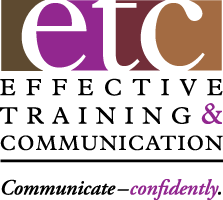A reporter sought me out recently for input on an article she was writing on elevator pitches. He’s a summary of our conversation.
- What is the importance of the elevator speech?
FYI … I prefer ‘Elevator Speech‘ (ES) to ‘Elevator Pitch’. ‘Pitch’ sounds like you’re trying to sell something. ‘Speech’ sounds like you want to share some information. Even though the difference in connotation is subtle, it can impact the mindset of the person doing it.
The purpose of an ES is to answer a stranger’s question ‘What do you do?‘ in an effective, efficient and engaging manner. It begins a short, focused dialog. It’s not a monologue. The purpose of that dialog is to begin to answer the two important networking objectives questions:
1. ‘Is this person someone I or someone I know can help?‘
2. Or … ‘Is this person or someone he or she knows someone who can help me?’
They’re separate concepts and connected with an ‘or’, not an ‘and’. ‘And’ implies that you can’t have one without the other. Not true for best-in-class networking pros.
- How long should it be?
Short enough to be interesting and engaging. The best ones I’ve heard are 15 seconds or less. Mine is 12. You know you have a good one when the other person asks questions. Since the ES begins a dialog, you can share additional information in responding to those questions.
The whole initial networking conversation with a stranger should be less than three minutes. Any longer and you keep him or her and yourself from meeting other people. If you have enough interest to continue the conversation, suggest a follow up phone call or coffee chat.
- What should it include?
An effective ES is interesting, clever without being cute or confusing, benefit-related, not a long list of features – what the person does or sells, free from jargon or buzz terms so your 12 year-old nephew would understand everything you say and easy to repeat.
- Other Best Practices?
Modify it to increase interest of the person listening, so try to initiate the conversation. Then, you can adapt yours as needed.
Don’t mix selling with networking – they’re very different processes. So, don’t end with ‘Is that something you might need?’ or ‘Can you refer me to someone who might be interested?’ Lame questions and not likely to produce results except turning the person off.
Also create similarly focused answers to the typical follow up questions other people may ask, like ‘How do you do that?’, ‘Who is your target market?’, ‘Where are you located?’, ‘How long have you done that?’, etc.
If you finish your ES and the other people don’t immediately ask you what you do, don’t automatically assume lack of interest. They might be analyzing what you said, taking a long time to think of something else to say or having way too much fun talking about their favorite subject – themselves. And they probably didn’t realize it was your turn to talk.
Be spontaneous, but focused. Make every word count without sounding like you memorized it. Write it for the ‘ear’ not the ‘eye’ as people are only going to hear it.
Keep working on Elevating your Elevator Speech to make it more effective, efficient and engaging. You’ll really stand out in the crowd of amateur networkers in a good way when you do.
